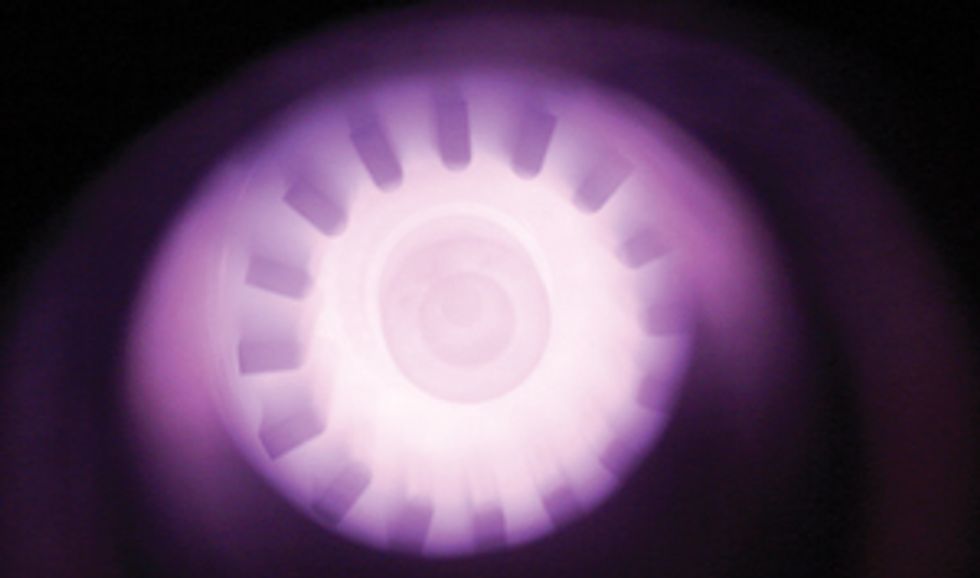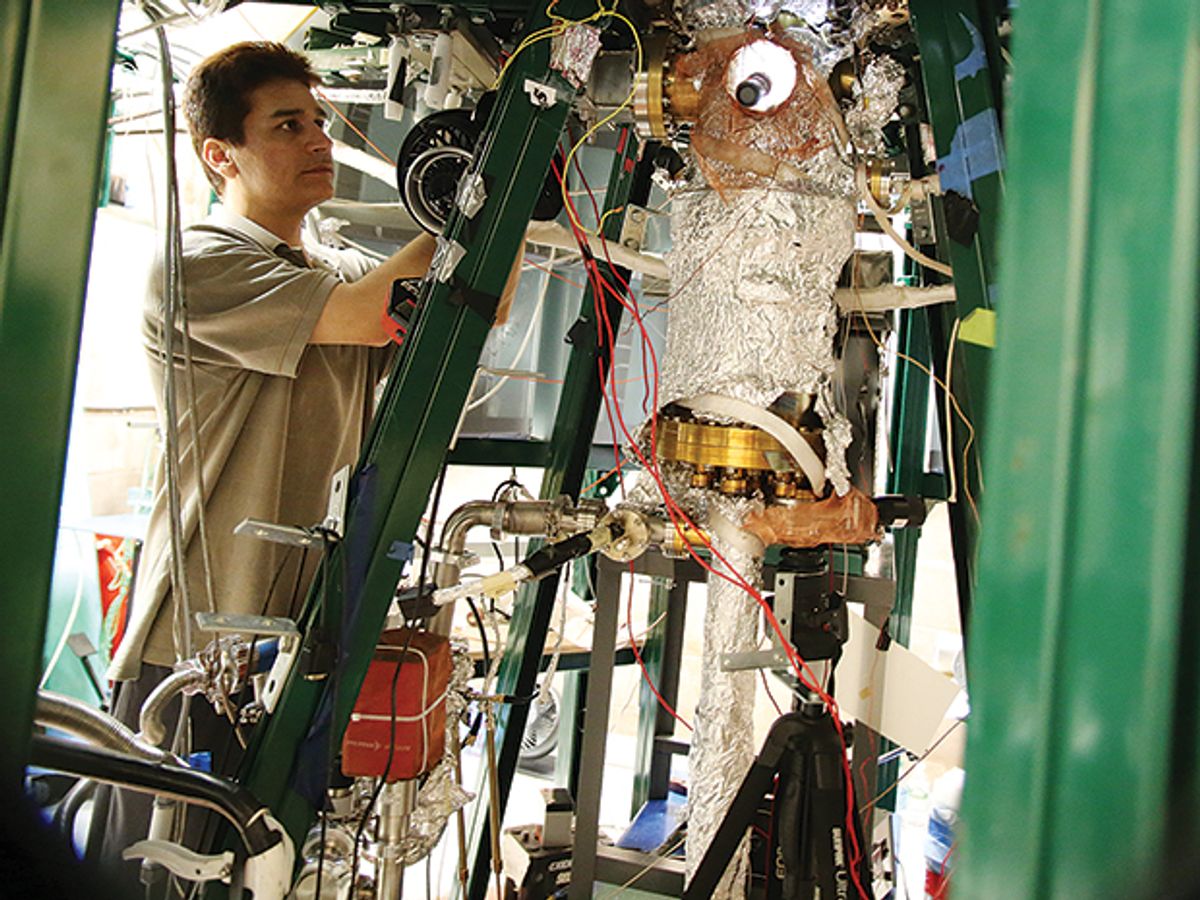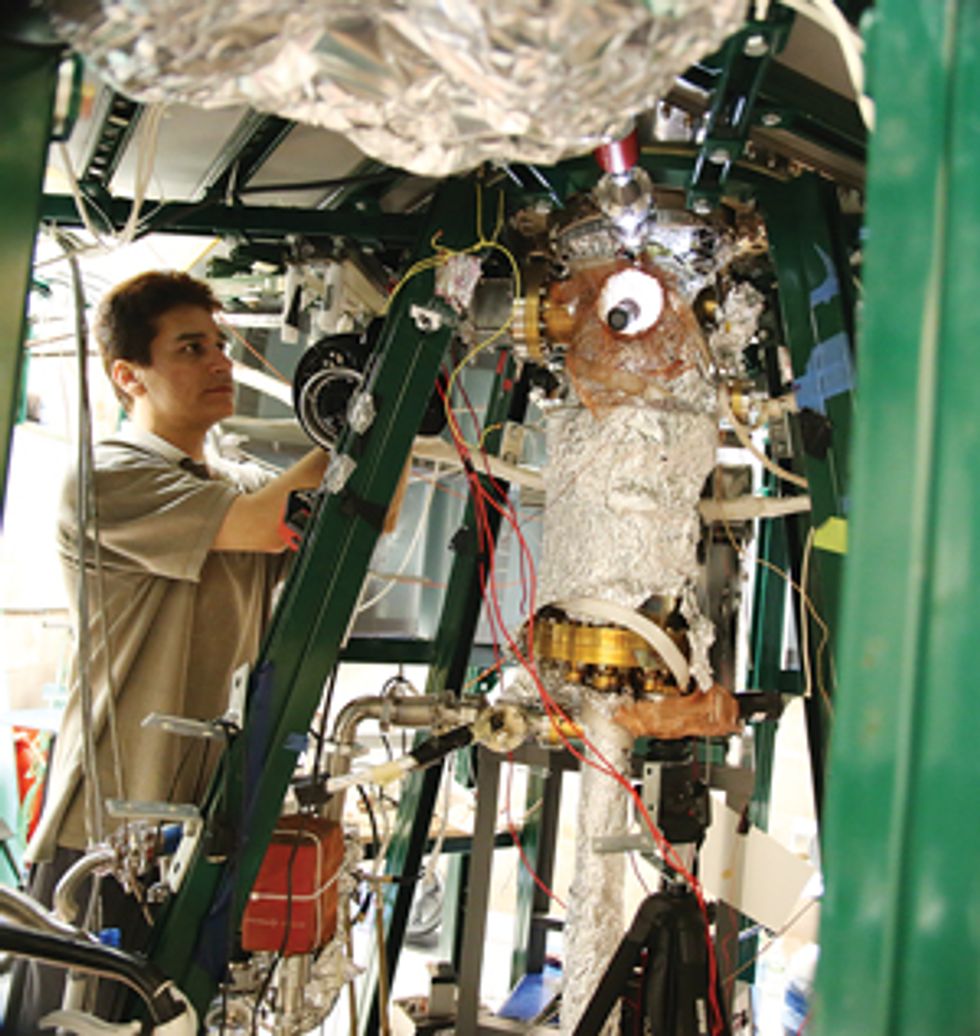
Since nuclear fusion’s earliest days, the sun has served as the ultimate prototype. It’s the closest continuously functioning large-scale fusion reactor, after all. Why not copy from the best? So tokamaks, stellarators, and laser ignition facilities all strive to create high-pressure and high-temperature plasmas that behave like microcosms of the sun’s core.
One of the biggest challenges these systems face is achieving the tight control they require over the plasma fuel they seek to fuse. But one New Jersey fusion startup company is taking a very different tack: “Guide the plasma’s instability; don’t fight it,” says Eric Lerner, president and chief scientist at LPPFusion, based in Middlesex, N.J.
LPPFusion is building what it calls a Dense Plasma Focus (DPF) device. This consists of a thick, hollow central anode surrounded by a ring of cathodes that are about the size and shape of candles. And indeed, the whole thing looks rather like a candelabra.
Here’s how it’s supposed to work: The device sits in a chamber filled with the gas to be fused at a low pressure, while a bank of external capacitors blast pulses of electricity down the electrodes, forming a plasma from the gas. In a millionth of a second, the electric blast reaches the top of the electrodes, and natural instabilities produce filaments of plasma. The pulse of current reaches the end of the electrodes, and the filaments combine and collapse near the mouth of the cathode. This produces microscopic balls of plasma called plasmoids. Further instabilities in the plasmoids produce electron beams, which heat up the plasmoids to the temperatures required for fusion.
Still under peer review as of press time was a paper submitted to the journal Physics of Plasmas, in which Lerner and his coauthors claim to have produced a confined mean ion energy of 200 kiloelectron volts, equivalent to a temperature of over 2 billion kelvins. “As far as we know, that’s a record for any fusion plasma,” Lerner says.
Whether a record has been shattered or not, Lerner now shares his company’s results with investors and the public.
“In the critical measure of how much energy out we get per unit energy in, we’re No. 2 among all the experiments in the world,” Lerner says. “And we’re only one-third behind the JET [Joint European Torus] experiment in the United Kingdom—which has almost a thousand times our resources. In terms of results per unit dollar, we’re clearly No. 1, by a long way.”
LPPFusion hopes to be the first to achieve break-even nuclear fusion by fusing simple hydrogen nuclei (one proton, no neutrons) with boron (five protons, six neutrons). Unlike many of the big sunlike fusion projects that fuse different isotopes of hydrogen together—such as JET, the National Ignition Facility, and ITER—proton-boron fusion produces no neutrons and thus no radioactivity from its primary reaction. The downside of proton-boron fusion is that it requires even higher temperatures and densities than does fusing deuterium and tritium.
Which is why Lerner’s finding could be very significant. One competitor in the proton-boron fusion race is Tri-Alpha Energy, backed by Microsoft cofounder Paul Allen. The company, located in Foothill Ranch, Calif., was recently in the news for its collaboration with Google, which yielded a new AI-based fusion algorithm this summer.
Says Heinrich Hora, emeritus professor of physics at the University of New South Wales, in Australia, Tri-Alpha may have higher-profile collaborators. But LPPFusion’s results arguably still give it a leg up.
“The work of Eric Lerner may be more promising than what they do at Tri-Alpha, because [LPP] has higher densities,” Hora says. “This is an argument in favor of Eric Lerner.”
Now on a new crowdfunding campaign to upgrade its DPF reactor, LPPFusion says it hopes to be fusing proton and boron by next year. (The results LPPFusion has obtained to date have involved deuterium plasmas.) And whether the victor is Tri-Alpha, LPP, or someone else altogether, the race to proton-boron breakeven shows there’s even hope out beyond the sun.
This article appears in the October 2017 print issue as “LPPFusion.”

